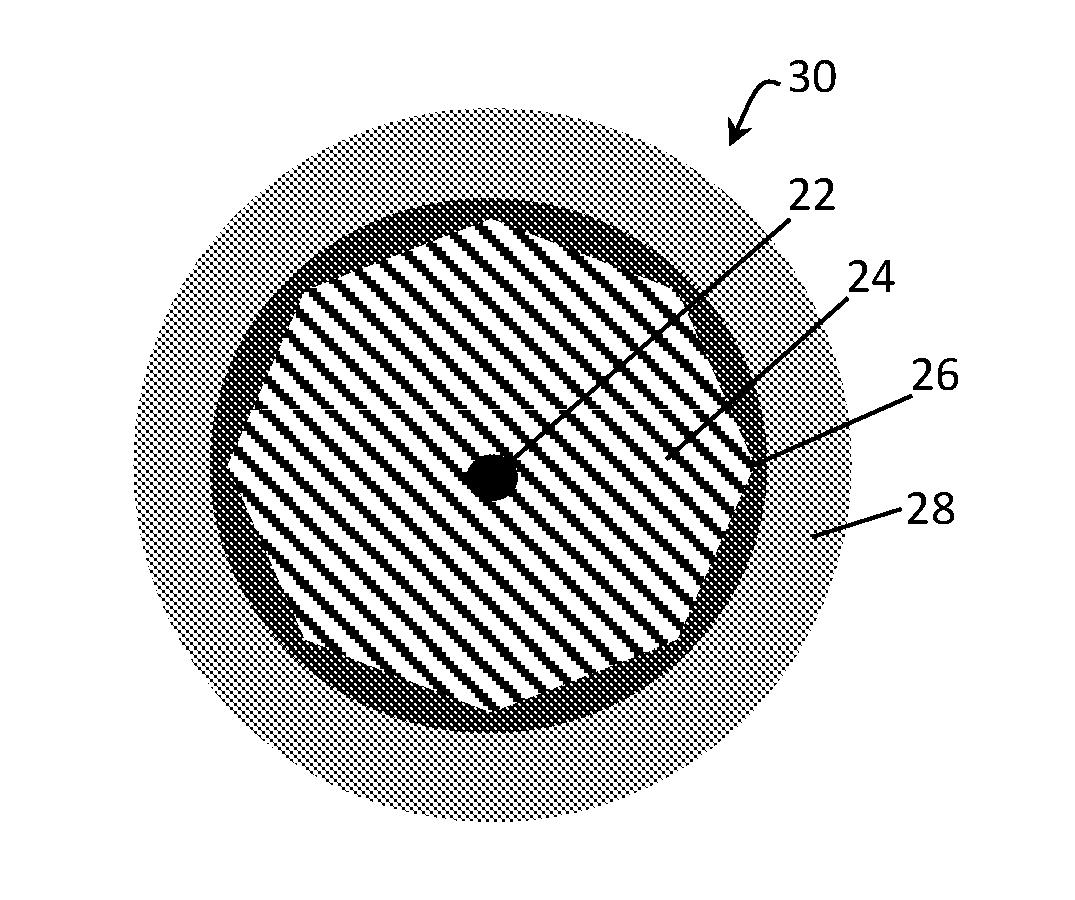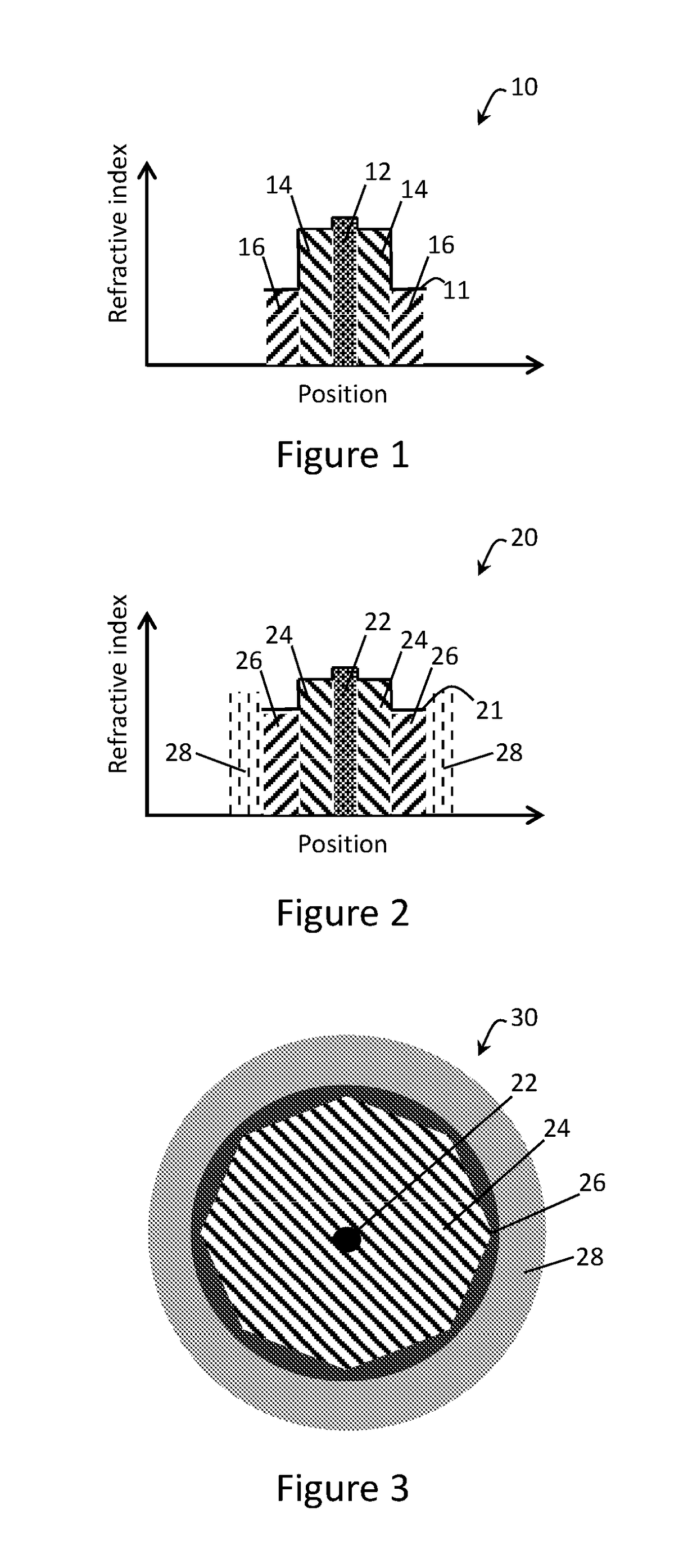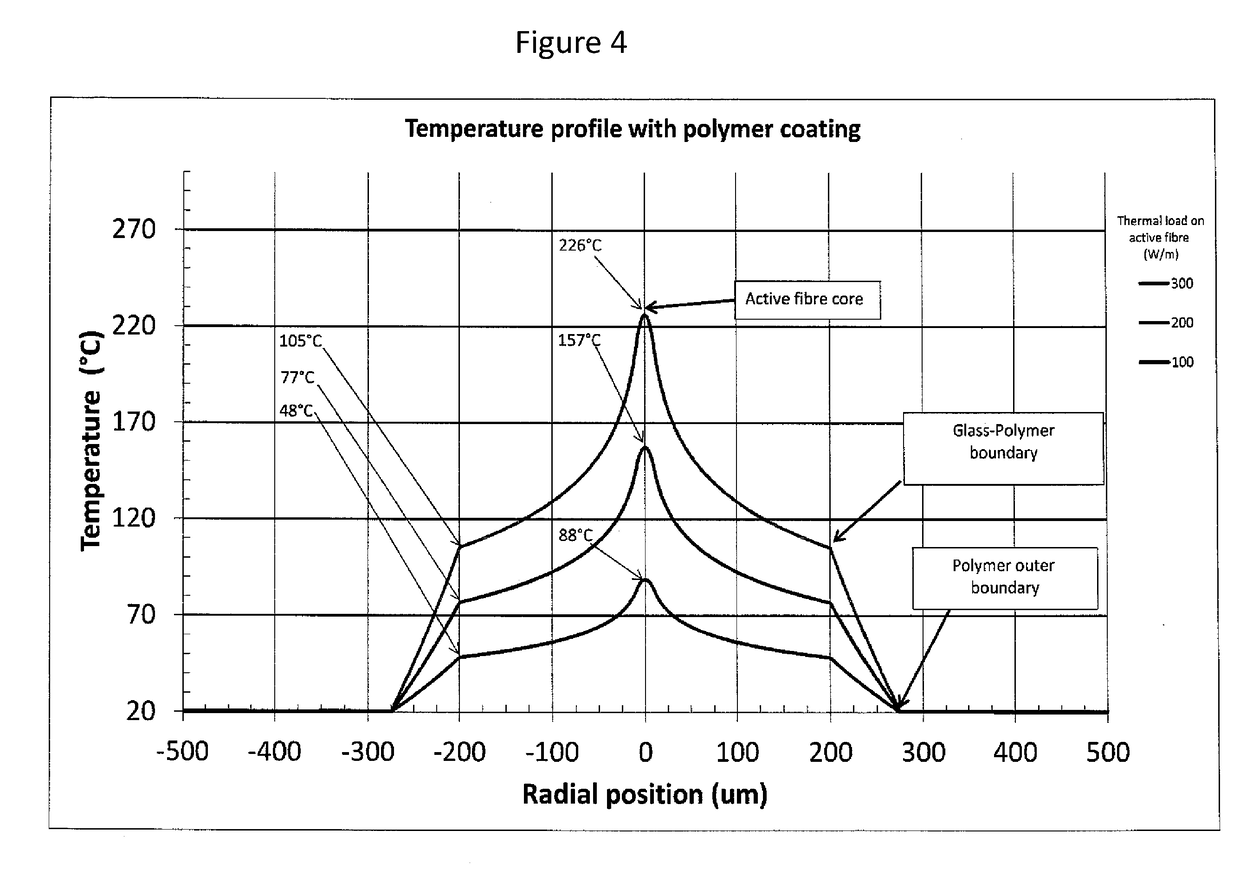An active optical fibre
a technology of active optical fibers and optical fibers, applied in the field of active optical fibres, can solve the problems of poor thermal conductivity, limited pump power that can be coupled into such a double-clad optical fibre without providing suitable cooling systems, and generally degraded polymer materials, etc., to achieve the effect of increasing the thermal conductivity of the coating, increasing the operating temperature, and maximising the distan
- Summary
- Abstract
- Description
- Claims
- Application Information
AI Technical Summary
Benefits of technology
Problems solved by technology
Method used
Image
Examples
Embodiment Construction
[0040]According to an embodiment of the present invention, there is provided an active optical fibre 30, as shown in FIG. 3, with relative refractive indexes of components of the active optical fibre 30 shown in the graphical representation 20 of the active optical fibre 30. Indeed, in FIG. 2, it can be seen that the active optical fibre 30 includes components having different refractive indexes shown by the line 21 relative to their position in the optical fibre 30.
[0041]The active optical fibre 30 includes a central core 22 comprised of a first material with a first refractive index. For example, in an embodiment, the first material is Ytterbium doped silica material with a refractive index of 1.452. Immediately surrounding the core 22 is an inner cladding 24 comprised of a second material with a second refractive index. In the embodiment, the second material is pure silica with a refractive index of 1.45. The core 22 and the inner cladding 24 form an area configured to propagate ...
PUM
| Property | Measurement | Unit |
|---|---|---|
| operating temperature | aaaaa | aaaaa |
| thermal conductivity | aaaaa | aaaaa |
| thermal conductivity | aaaaa | aaaaa |
Abstract
Description
Claims
Application Information
 Login to View More
Login to View More - R&D
- Intellectual Property
- Life Sciences
- Materials
- Tech Scout
- Unparalleled Data Quality
- Higher Quality Content
- 60% Fewer Hallucinations
Browse by: Latest US Patents, China's latest patents, Technical Efficacy Thesaurus, Application Domain, Technology Topic, Popular Technical Reports.
© 2025 PatSnap. All rights reserved.Legal|Privacy policy|Modern Slavery Act Transparency Statement|Sitemap|About US| Contact US: help@patsnap.com



